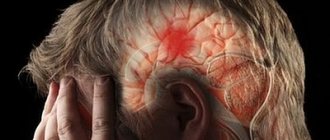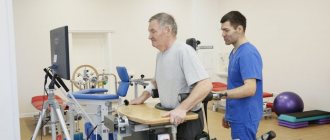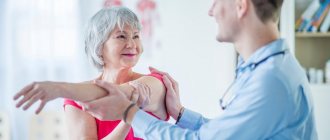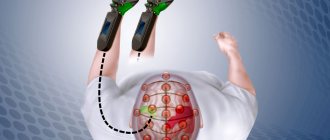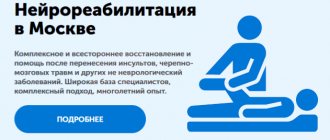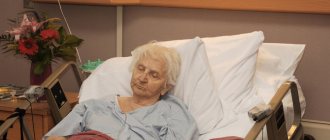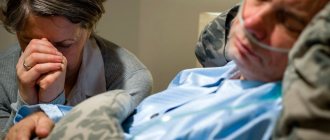Stroke is a serious disease in which many functions of the body are affected. In case of acute disruption of the blood supply to the brain, some of the cells responsible for certain actions in the body die.
After suffering from this disease, speech and motor functions suffer the most. This article will help answer many questions related to the restoration of the patient’s musculoskeletal system.
In order to understand how complete recovery is possible, you need to pay attention to factors such as:
- previous form of stroke;
- area of brain damage;
- age and general condition of the patient before the stroke;
- completeness and timeliness of medical care to the victim.
In any case, the rehabilitation process is a long-term and difficult period that requires maximum effort and dedication.
When can you start training?
To determine the timing of the start of training activities, their intensity and the possibility of working with an assistant, it is necessary to consider all stages of the disease and their susceptibility to therapeutic effects. There are 6 main periods after a stroke:
- The most acute – the first 24 hours after manifestation. The speed of resuscitation measures and the implementation of high-quality medical intervention directly affect the further recovery of the patient;
- Acute – from the second day to three weeks. Active medical treatment and prevention of negative consequences. During this period, it is not recommended to conduct any activities in order to monitor health conditions and prevent a possible re-strike;
- Subacute – from the fourth week to three months after the moment of impact. During this period, it is recommended to begin performing simple passive exercises with the help of a rehabilitation therapist. An important task is to place the patient's limbs in different positions in order to prevent muscle hypertonicity.
ATTENTION! A prerequisite for speeding up the recovery process is to constantly take medications prescribed by your doctor!
- Earlier recovery - the period from the third to the sixth month from the onset of the disease. Characterized by an active recovery process. Active therapy, massage and physiotherapy are added to the “lying down” exercises. Usually by this period the patient is discharged from the hospital, and he receives all procedures on an outpatient basis or performs them independently at home. But if there is a need or opportunity, then you can undergo a rehabilitation course in a special rehabilitation center.
IMPORTANT! The 4th period is a period of active recovery. If you miss this time, the likelihood of complete and successful rehabilitation is reduced several times.
- Late recovery - from the seventh to the twelfth month. At this stage, the results of previous work are visible. Despite the fact that the potential for recovery decreases every month, constant fruitful work allows you not to stop there, but to continue full recovery.
- Residual effects - the period after one year of treatment. Self-recovery and following doctor’s recommendations continue. Regular consultations and examinations are also necessary to prevent further strokes.
How to learn to walk as a result of brain aneurysm surgery and the consequences
There were a lot of stroke patients in different physical and psychological conditions at the Neurorehabilitation Center.
First of all, in the beginning, I had a hemorrhagic stroke, when I became very ill.
That is, the aneurysm did not rupture in my head
It so happened that everything happened at the airport, where the doctors were.
Who took action, that is, introduced some medications to lower high blood pressure 210/100.
And then they sent me for an MRI to a clinic near the airport.
As a result, having received MRI data, they took him to the Krasnoyarsk regional hospital.
I later read all this in the discharge summary, because at that moment I was not myself.
That is, maybe she was just sleeping and didn’t remember anything.
First, at the Krasnoyarsk Regional Hospital, I underwent surgery for an aneurysm of the middle part of the carotid artery of the brain on the left side.
Secondly, after the operation, I already started walking around the ward.
Thirdly, there were consequences, deafness for a week, and an ischemic stroke with loss of speech and movement.
That is, in other words, the most important organ, the brain, was damaged, on which everything depends, both speech and movement.
The size of the area, according to MRI, was 7.6x5.7x4.5 cm.
I was lucky that an experienced, competent neurologist, after studying my documents, took me for treatment.
The doctor realized that apart from the stroke, I had practically no illnesses.
Of course, the doctors at the Center have extensive experience, and it is believed that the patient can recover up to 40 years of age.
First of all, most importantly, the patient himself, his motives, and his desires are of great importance.
Then I didn’t care, I just wanted to walk.
Even, first of all, not to talk, but to walk!
Read also: A PERSON WILL FEEL HIMSELF AS A HUMAN
The process of learning to walk
To choose the right program for restoring walking, you need to be able to distinguish the signs of a musculoskeletal disorder:
- unsteadiness of gait;
- inability to fully bend or straighten the limbs;
- impaired coordination of movements;
- decreased sensitivity;
- walking on toes;
- inability to walk quickly.
As mentioned above, treatment with physical exercises must begin from the beginning of the second month.
How to start
There are 4 main stages that precede independent walking.
Stage 1 – passive exercises. These are the very first exercises in a lying position - fixing the limbs in different positions.
All passive exercises are conducted by a rehabilitation specialist. First, he independently warms up the limbs, then connects the patient’s muscle memory. To do this, exercises are performed first with a healthy leg or arm (as a rule, one hemisphere suffers during a stroke), and after the movement they are mentally transferred to the affected limb.
Passive exercises include:
- flexion and extension of the knee joints;
- rotation, flexion and extension of the feet;
- abduction, flexion and extension of the hip joints.
Stage 2 – active exercise and sitting training. After a set of passive exercises, the patient has more strength for new skills. At this stage, you can include the following exercises:
- throwing legs over one another;
- bending and straightening the legs at the knees while lying on the stomach;
- "bike";
- turning the feet from a lying position with bent knees;
- move the heel of the foot along the shin of the other leg;
- lifting with legs moving to the sides;
- lifting the pelvis from a lying position with bent knees;
- raising legs while lying on your side;
- turning to one side.
The last exercise is necessary for further correct sitting. In order to sit the patient down, you need to release your legs to the floor and spread them wider, push off the bed with your healthy hand and take a sitting position.
Stage 3 – learning to get up and stand. When training the process of standing up, the following exercises are used:
- lifting the body while lying on the bed;
- moving along the bed.
After consolidating the exercises and gaining knowledge, the patient can try to stand up.
IMPORTANT! When first attempting to stand up, the patient must be accompanied by a rehabilitation specialist! A fall from muscle weakness can cause shock and delay the rehabilitation process for a long time!
Before the patient himself can take the first steps, it is necessary to do some steps:
- stomping on the spot without lifting your feet off the floor, raising your feet a little later;
- rolling the foot from heel to toe and vice versa;
- stepping over an obstacle - at first it should be something low, with the development of skill the obstacle is increased;
- moving the foot back with support on the toe.
Stage 4 – restoration of the walking process. At this stage, the patient, with the help of a doctor or special assistant, tries to take the first steps. During this period, it is advisable to use special walking devices, for example, three- or four-legged walkers.
Walkers
Walkers are quite heavy and at first will serve as a great support for the victim.
After the patient learns to stand confidently with a walker, then with their help he will be able to move his legs, thereby stepping forward.
It is worth noting that it is necessary to select and adjust the walker correctly so that the rehabilitation process proceeds as quickly and comfortably as possible.
There are different types of walkers on the market, so you can freely choose which one is suitable for a particular patient.
It is worth paying attention to the universal design. These walkers can work as fixed, stationary and walking.
Quick results
For the fastest possible recovery effect, it is necessary to constantly consolidate all the skills acquired during this period with additional exercises and warm-ups. The recommended time for daily exercise is 30 minutes 2 times a day.
If the patient feels strength or, conversely, weakness, then this time must be adjusted depending on the situation.
If a person already knows how to stand up on his own and take steps with support, it is necessary to gradually complicate the activities, for example, by walking on sand or grass. After consolidating these exercises, you need to move on to more complex ones - climbing to small elevations, gradually bringing them to climbing stairs.
To make exercise more comfortable and achieve maximum effect, you must wear special orthopedic shoes that secure the foot.
It is also very important to teach the patient to be independent. He can and should be helped in everything, but not done for him.
The main rule for a quick and effective rehabilitation process is constant exercise with a gradual increase in loads and following all recommendations prescribed by the attending physician.
We invite you to watch an interesting video on the topic:
How to learn the correct gait
After the patient has been able to sit down, stand up and take the first steps independently, it is necessary to use special fixing devices in the exercises to help the correct formation of gait. These include:
- holders for fixing the foot - for proper distribution of weight on the foot and avoiding walking on the toes;
- clamps - knee pads - to hold the knee joint in a vertical position.
One of the effective methods for developing the correct gait is to draw footprints for the patient to walk. This technique is common in rehabilitation centers.
You can also use special treadmills to develop your gait and speed up the recovery process. This device has special extended handrails, the lowest possible speed and an emergency braking button.
IMPORTANT! When performing rehabilitation exercises, you should not rush, even if everything works out; At a rapid pace, one can become accustomed to a comfortable but incorrect position of the ankle joint.
If possible, it is recommended to include Nordic walking in your list of activities.
Devices and simulators
The main devices to help restore walking are walkers, canes, crutches and any other available means that have handrails that you can lean on while moving.
To restore walking, special exercise machines have also been created that allow you to quickly get in shape, namely:
- expander for legs;
- exercise bike - at first used with an automatic motor, which allows you to make movements in the absence of muscle movements; then replaced with a regular one with fixed pedals;
- stepper and step platform - a pedal exerciser for the legs with a handle for body support;
- treadmill – it is advisable to use a special treadmill with additional handrails and supports;
- Shagogon 409 – often used in medical centers; imitates walking in the complete absence of motor ability.
For the shoulder joint
Restoration of the forearm and shoulder joint takes place with the help of flexion and extension exercises, rotation, push-ups, muscle tension and relaxation, clapping, and massage. To do this, use exercise machines, dumbbells, and various devices. First, the arm is kneaded, then a set of exercises is performed; therapeutic exercises are always combined with a massage of the limbs. A set of exercises for the shoulder joint:
- The patient lies on his back, arms extended along the body. The instructor holds his hand at the elbow to avoid bending, takes the patient's palm with his other hand and moves the patient's arm up and down.
- The instructor performs circular movements with the patient's arm fixed in a straightened state.
- The patient lies on his back, with his arm slightly to the side. The instructor turns the straightened arm over, palm down, then up.


